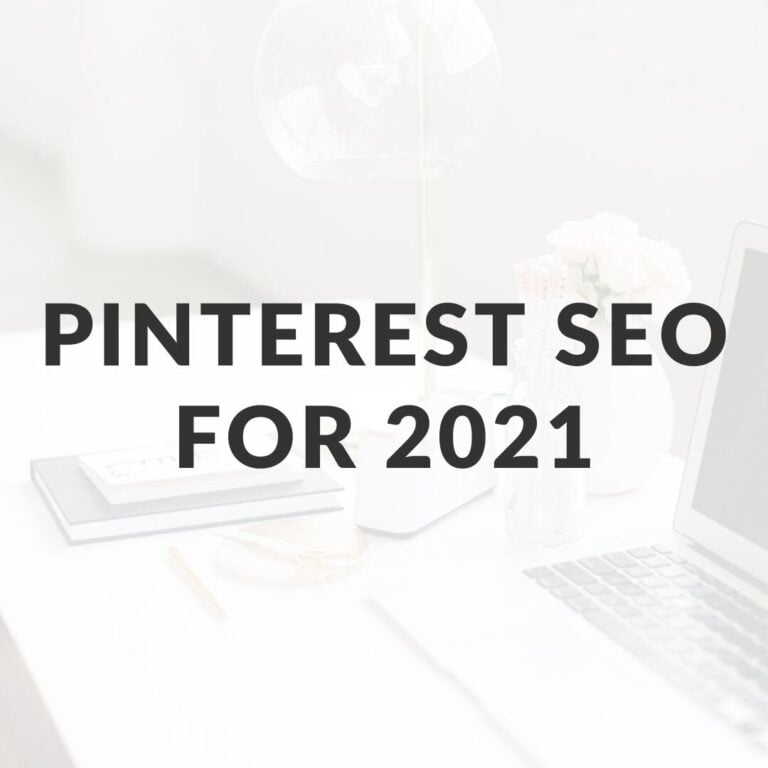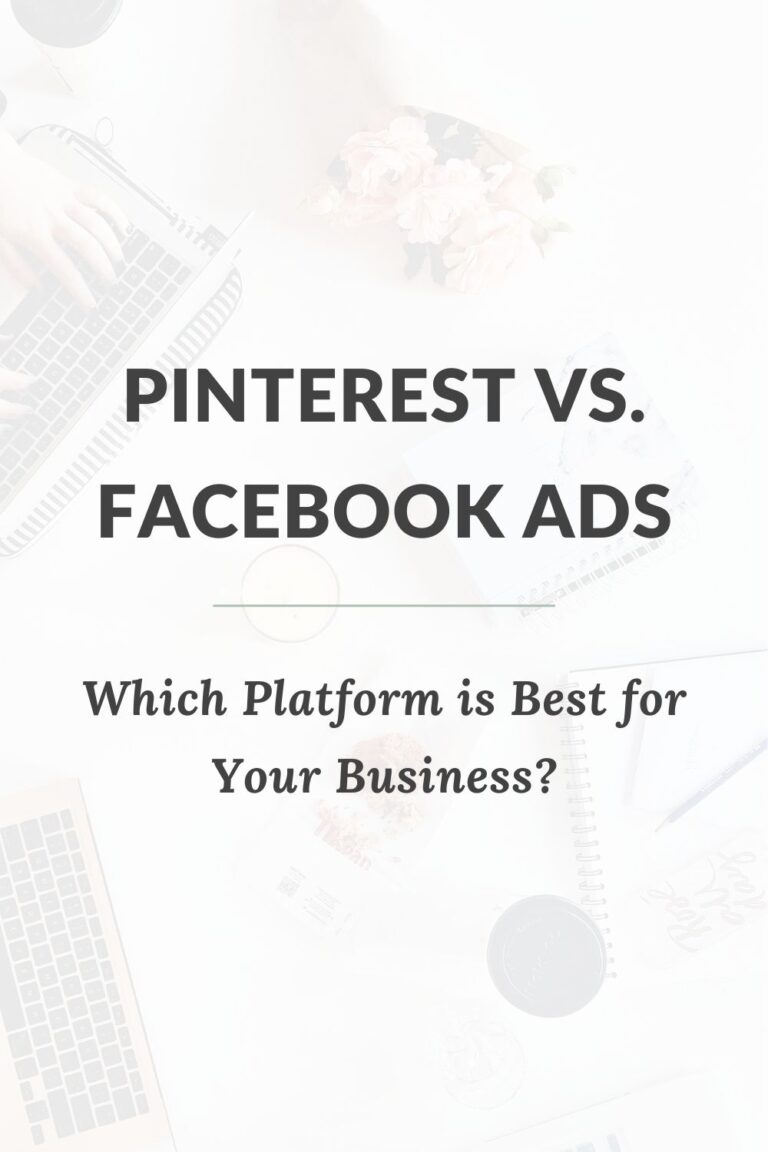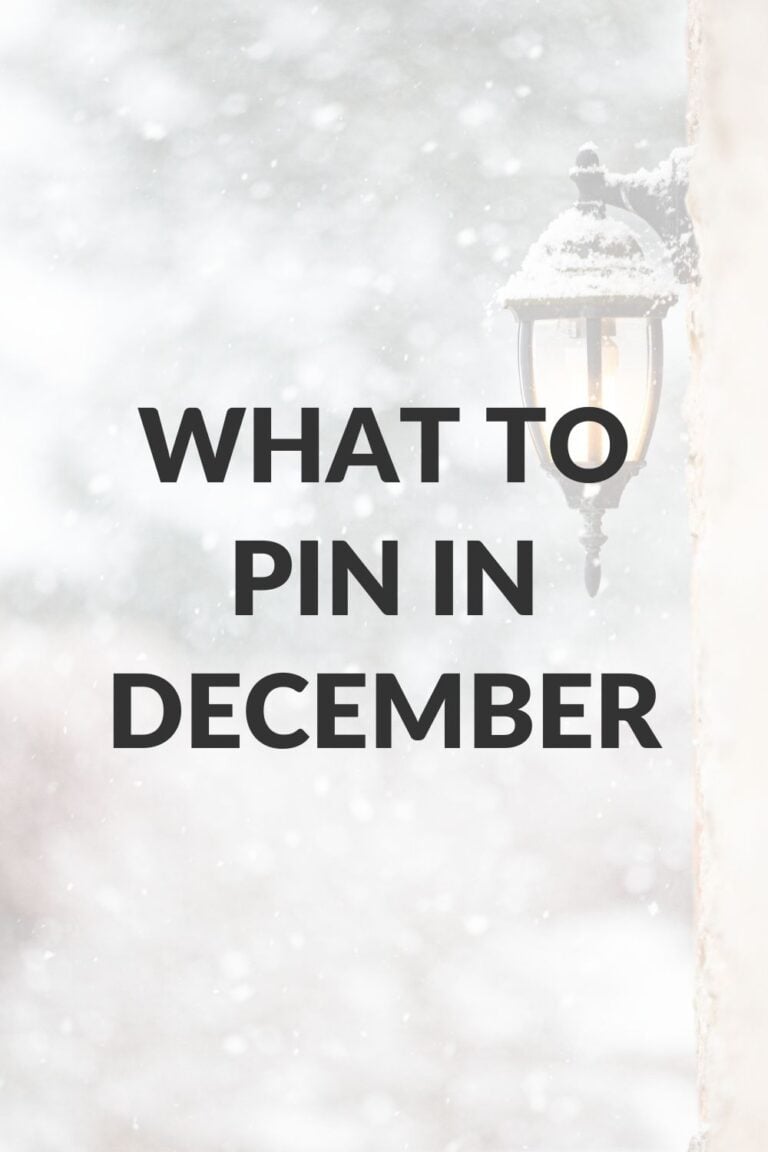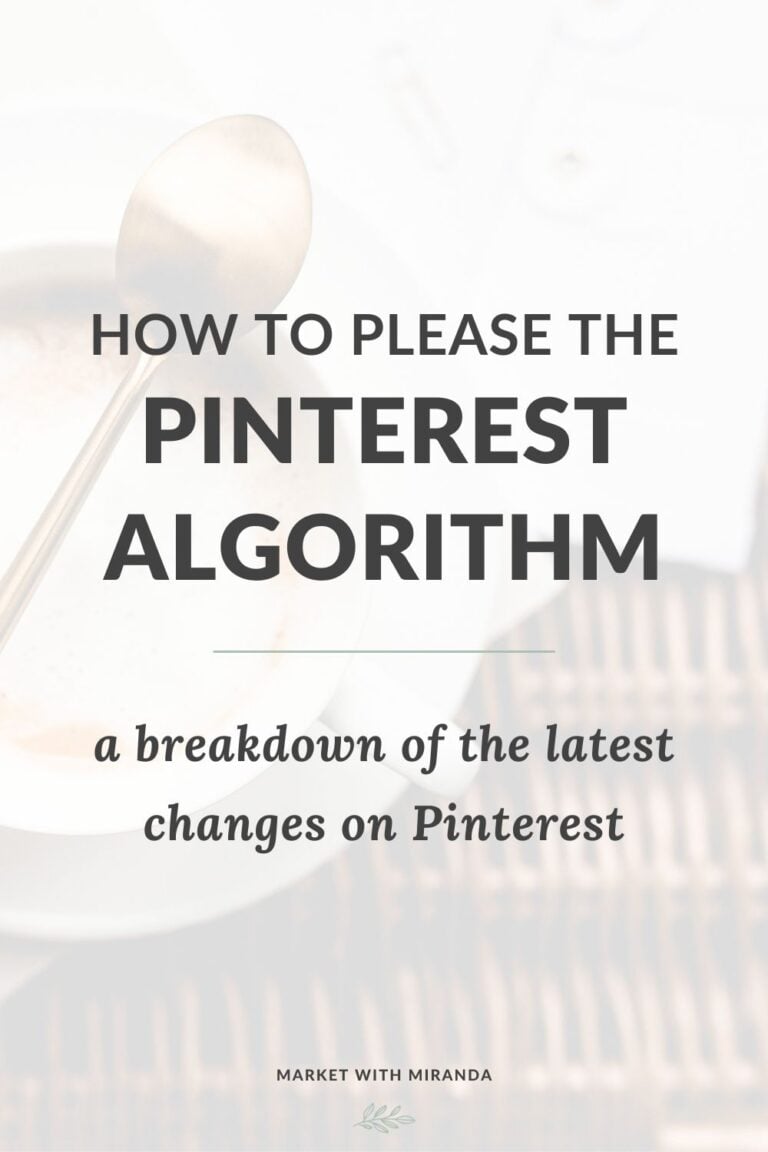17 Common Pinterest Mistakes You Need to Avoid
Are you trying to grow your blog with the help of Pinterest but not seeing results? Avoid these common Pinterest mistakes so you can improve your Pinterest marketing strategy.
Here is a list of the most common mistakes that business owners are making when they’re trying to market their blog or business on Pinterest.
1) You haven’t claimed all of your domains
Pinterest now allows you to claim not one, but TWO websites. This is really useful for entrepreneurs that may have a site on WordPress and Shopify or simply two separate blogs that they are promoting.
You can also claim your Instagram, Etsy, and Youtube accounts.
When you claim all of these accounts, you can easily see all of your own pins in Pinterest Analytics as well as pins that other pinners share from your claimed domains.
2) Your profile bio is incomplete
Pinterest appears to be transforming its business model into something that’s similar to Instagram and the other social media platforms. That likely means that the number of followers on Pinterest are going to matter more and more as the platform evolves.

So make sure that your Pinterest profile includes your website link and brief information about your business.
You can only add your website if you have a Pinterest business account and claimed your website domain.
3) You’re not doing keyword research
Pinterest SEO plays a role in helping you grow on the platform. The most important way to improve SEO is by performing thorough keyword research.
You can do this with the Pinterest Trends tool, which allows you see some commonly searched for queries and when they’re trending.

Make a list of all relevant keywords that you think your target audience may be searching for.
Having a list of keywords ready to use will make it much easier to implement the rest of your Pinterest strategy.
You can also refer to these blog posts that cover Pinterest trends throughout every month of the year:
4) You’re not applying keywords in the right places
There are several places where you can place Pinterest keywords: pin titles, pin descriptions, board titles, and board descriptions.
Pinterest is a visual search engine so you can also incorporate keywords into your pin designs.
This is one of the most common Pinterest mistakes out there. Make your pin titles and board titles simple with a main keyword.
Use a sentence or two in your pin descriptions and board descriptions. Make it clear what they’re about!
5) You’re pinning content in a spammy way
Pinterest analyzes the URLs on your website. It knows when you’ve already shared content from a specific URL.
So, don’t share content that links to the same URL on the same day! Try to space out the same URLs by at least a week in your schedule.
6) You’re not creating Idea Pins
f you’re not creating Idea Pins yet, you’re really missing out! The Pinterest algorithm is currently prioritizing these pins over traditional pins and video pins.
There are a few perks to Idea Pins even though you currently aren’t able to link to your website. You can tag other Pinterest business accounts and apply some affiliate links. This may be a great way to expand on your brand partnerships.
Pinterest Tips: For best results, add a combination of video and images to your slides to see what’s more engaging for your audience. Short video content works best! The pin design for Idea Pins is slightly different than regular pins. You can use that same dimensions as Instagram Stories.
Only time will tell, but for now, it appears that Idea Pins may be increasing your blog traffic, IF you have your claimed website in your Pinterest bio. Check your “direct traffic” in Google Analytics as well as “referrals” from Pinterest.
Related: How to Create Idea Pins
7) You’re only making one pin for each blog post or piece of content
Every blog post on your website should have at least 3 or 4 pin designs. You can use each pin to appeal to different audiences.
For example, a frozen margarita could appeal to foodies that love Taco Tuesday, friends that are ready for a girl’s night in, or a bride looking for DIY cocktails to serve at her wedding.
As mentioned in #5, don’t publish similar pins going to the same URL on the same day, or even within the same week.
8) Your pins are horizontal, square, or too small!
Pinterest prefers pins that fall under the 2:3 ratio. 1,000 by 1,500 pixels is a good option for your pin designs.
Think about it this way… longer pins will stand out better to consumers when they’re browsing the Smart Feed, compared to square or horizontal pins.
9) You’re using illegible fonts in your Pinterest graphics
It’s fun to use curvy script fonts and artsy typography, but it doesn’t always work on Pinterest!
Use serif type fonts instead. If you want text to stick out, make it bold and change the colors.
If you want to use a cursive font, test out your graphics first. Zoom out on the program you’re using to 25%. Can you still read the text in the pin images when it’s small?
Most users access Pinterest with a smartphone so it’s good practice to make pins easy to see and read on smaller screens.
10) Your Pinterest boards are really broad topics
In my experience, the boards that usually perform the best are dedicated to a particular topic.
Do you have a board titled “dinner recipes”? Consider making other boards that are called “chicken dinner recipes” or “gluten-free dinner ideas”. Pin to these boards first before you pin to your broader boards.
11) You’re pinning content to cluttered group boards
If you have a Tailwind account, you can check your Board Insights. Remove group boards with the lowest Engagement Scores first.
If you don’t have Tailwind, go to Pinterest and look at the group boards. If the boards have hundreds of contributors and hundreds of thousands of pins, then chances are that your content is getting lost in a sea of pins.
Pinterest Tip: It’s best to pin your own pins to your own boards first.
12) You’re inconsistent in how often you publish new pins
Tailwind allows you to schedule pins but you can also schedule pins directly on Pinterest. Or you can used approved schedulers like Canva Pro, Later, or Planoly.
There is no “magic number”. Small blogs can share 2 or 3 pins per day. Bigger blogs can share 20 pins per day. It’s all about posting quality, not quantity.
Pinterest Tip: Be consistent in how often you publish! If you don’t have a lot of time or a lot of content yet, start out small. Publish one Idea Pin and one regular pin per week.
13) You’re using hashtags
This is a confusing one because there was a brief moment in time (around 2019 and 2020) when you WERE encouraged to use 2 or 3 hashtags in your Pinterest descriptions.
However, it became clear that pinners were not using the functionality on Pinterest like they do on Instagram. So using hashtags on Pinterest have become obsolete.
14) You’re using free Stock Photos on your Pinterest graphics
It’s very convenient to use free stock photos, especially when you’re first getting started with blogging. But, part of the component of using “fresh pins” means Pinterest wants to see new images on their platform.
So if you’re using popular stock photos, your Pinterest graphics may not have very much exposure because Pinterest prefers original photos.
It’s very common to see other content creators using the same stock photos that you are so they aren’t going to appear very fresh.
15) You’re not reviewing Pinterest Analytics
It’s very important to take a look at the different metrics provided in Pinterest analytics so you can see what factors are helping you grow.
It’s good practice to implement a/b testing when you create Pinterest graphics so you can see which designs have the most engagement.
When you go into the Pinterest analytics dashboard, take a look at the menu on the lefthand side. Under “claimed account”, you should select your main website that you are directing pins to.
Then scroll down to the section near the bottom that says “Top Pins”. There is a drop down menu that currently has the following options: Impressions, Engagements, Pin clicks, Outbound clicks, and Saves.
Take a look at each of the options so you can see which of your pins show up first. With outbound clicks, you can actually see which pins are bringing pinners to your blog posts.
16) Your website isn’t optimized for Pinterest
Pinterest cares about the entire user experience, including what occurs on your website when pinners click on one of your pins. Here are some quick ways to improve your website:
- have a header and footer menu that are easy to navigate
- make sure your website and blog posts load lightning fast
- have a search bar within your header menu or sidebar so it’s accessible
- if you have a popup for your email list, don’t set the popup to appear immediately; give users a chance to see your own content on your website!
Pinterest Tip: Make it easy for users to pin images from your website. The best way to do this is by installing a plugin like Grow or TastyPins.
17) You have no calls to action
It’s good practice to include calls to action in your pin descriptions or even in your pin designs! It’s never a bad idea to direct consumers on what they should do.
Sometimes a simple “learn more” or “click here” can increase engagement.
For Idea Pins, do not include a link to your website and instruct pinners to go to your website. Pinterest has stated that these Idea Pins will have less reach in the Pinterest algorithm!
Follow me on Pinterest and feel free to check out my organic Pinterest management services.
Were you making any of these common Pinterest mistakes?
Now that you have a better understanding of Pinterest best practices, you can implement these strategies for more growth on Pinterest!






